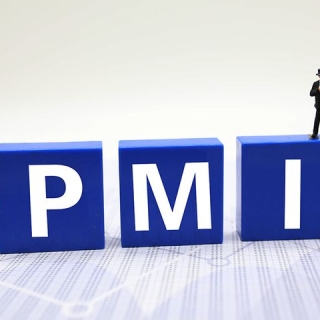


The Manufacturing Purchasing Managers' Index (PMI) in the US has shown an unexpected increase, according to recently released data. The actual PMI was reported to be 50.7, outperforming both the forecasted and previous figures.
Predictions for the PMI had been set at 49.0, indicating a forecasted contraction in the manufacturing sector. However, the actual figure of 50.7 not only exceeded this forecast but also surpassed the previous month's PMI of 50.2. This indicates a slight expansion in the manufacturing sector, as a PMI reading above 50 is generally seen as a sign of growth.
The PMI is a closely watched indicator as it provides insights into the activity level of purchasing managers in the manufacturing sector. These managers often have early access to data about their company's performance, which can serve as a leading indicator of overall economic performance.
A higher than expected PMI reading is generally seen as positive, or bullish, for the US dollar (USD). In this case, the higher actual PMI can be expected to strengthen the USD in currency markets. Conversely, a lower than expected PMI is taken as negative, or bearish, for the USD.
The unexpected rise in the PMI suggests that the manufacturing sector is holding up better than expected, despite predictions of a contraction. This could be seen as a positive sign for the overall health of the US economy, as the manufacturing sector plays a crucial role in economic output and employment.
This latest PMI data release will likely be closely analyzed by traders and economists, as they seek to understand the implications for the USD and the wider US economy.
Source: Investing.com
Federal Reserve Chair Jerome Powell on Thursday responded to a Trump administration official's demands for information about cost overruns for a renovation project at the central bank's Washington hea...
The United States Commerce Department is set to impose preliminary anti-dumping duties of 93.5% on graphite imported from China after concluding the materials, which are a key component for batteries,...
U.S. President Donald Trump's decision to ramp up arms shipments to Ukraine is a signal to Kyiv to abandon peace efforts, Russia said on Thursday, vowing it would not accept the "blackmail" of Washing...
Federal Reserve Governor Adriana Kugler said the US central bank should keep interest rates steady "for some time," citing accelerating inflation as tariffs begin to push up prices. "Given the stabil...
Unemployment claims fell 7,000 to 221,000 in the week ending July 12, compared with the median estimate of 233,000, according to Labor Department data. The estimated range was 220,000-240,000 accordi...
Gold steadied and was set for a moderate weekly loss as investors assessed the outlook for Federal Reserve rate cuts after resilient US jobs and retail data eased concerns about the economy. Bullion traded below $3,340 an ounce in early Asian...
Australian equities notched a record high as Asia-Pacific markets tracked Wall Street gains on the back of strong U.S. economic data reports and a slew of better-than-expected corporate earnings. Australia stock markets climb to record...
The Japanese yen rose to around 148 per dollar on Friday, rebounding from a significant drop in the previous session, as investors digested the latest inflation data. Headline inflation ticked down to 3.3% in June 2025 from 3.5% in May, yet it...
 U.S. consumer prices increased by the most in five months in June amid higher costs for some goods, suggesting tariffs were starting to have an...
U.S. consumer prices increased by the most in five months in June amid higher costs for some goods, suggesting tariffs were starting to have an...
 European stocks erased early gains and closed mostly lower on Tuesday as markets continued to assess how potential tariffs from the US may hurt...
European stocks erased early gains and closed mostly lower on Tuesday as markets continued to assess how potential tariffs from the US may hurt...
 President Donald Trump's renewed calls for Federal Reserve Chair Jerome Powell's resignation have prompted investors to protect portfolios against...
President Donald Trump's renewed calls for Federal Reserve Chair Jerome Powell's resignation have prompted investors to protect portfolios against...
 The annual core consumer price inflation rate in the United States, which excludes volatile items like food and energy, ticked up to 2.9% in June...
The annual core consumer price inflation rate in the United States, which excludes volatile items like food and energy, ticked up to 2.9% in June...